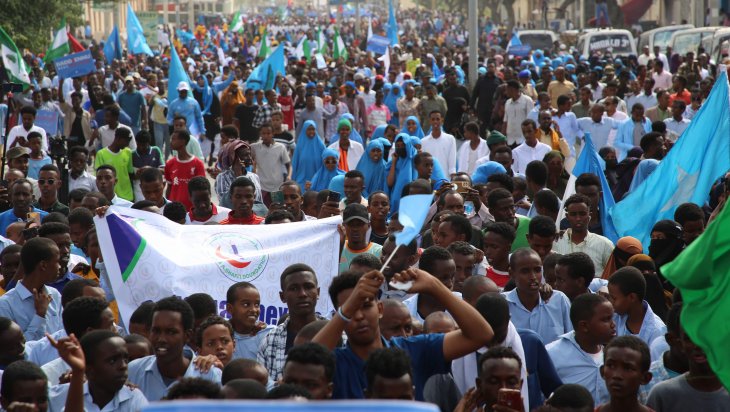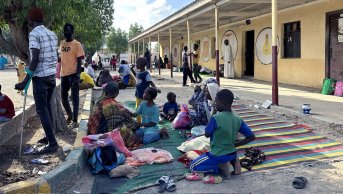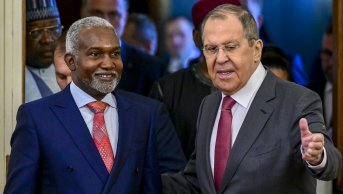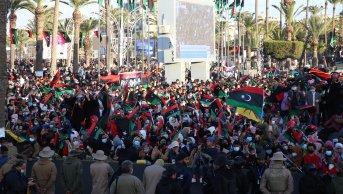The Horn of Africa at a Crossroads: Making Sense of the Somalia-Ethiopian Tensions

On January 1st, in Ethiopia's capital, Addis Ababa, a Memorandum of Understanding (MoU) signed between Ethiopia and the separatist region of Somaliland in Somalia significantly heightened regional tensions by affecting the fragile geopolitical equilibrium in the Horn of Africa. The MoU, endorsed by Ethiopian Prime Minister Abiy Ahmed and Somaliland's Leader Muse Bixi Abdi, facilitates Ethiopia's strategic access to the Red Sea, extending beyond its terrestrial frontiers. The MoU entails a 50-year lease by Ethiopia of a 20 km stretch of coastline at the Berbera Port in Somaliland for both military and commercial purposes. A reciprocal arrangement suggests that Somaliland, as a state entity, will acquire a stake in Ethiopian Airlines in exchange for Red Sea access.
However, the pivotal aspect of the MoU, which has sparked regional controversy, is the anticipated recognition of Somaliland as an independent state by Ethiopia. This situation gained momentum following assertions by Muse Bixi post- MoU intimating Ethiopia's potential role as the first state to acknowledge Somaliland's sovereignty. Despite the MoU's current status as a non-binding MoU, it has provoked a stern response from the Somali government. President Hasan Sheikh Mahmoud, invoking Somalia's sovereign rights and reiterating the motto "Somalia belongs to the Somalis," has categorically rejected the MoU, asserting a strong response to any actions perceived as threatening the nation's territorial integrity. As a matter of fact, the MoU also has issues in terms of international law.
Divergent Agendas: Understanding Conflicting Interests and Priorities
To gain a comprehensive understanding of the crisis emerging from the MoU, it is essential to analyze the priorities of the involved actors within a historical context, aiding in the formulation of projections. For Ethiopia, a landlocked nation, this MoU is pivotal for securing access to the Red Sea. Ethiopia's loss of sea access following Eritrea's secession and declaration of independence in 1993 has resulted in a reliance on neighboring Djibouti for maritime trade routes, entailing a substantial annual expenditure of approximately 1.5 billion USD for Addis Ababa. As one of the world's most populous landlocked nations with a population exceeding 120 million, Ethiopia faces heightened dependency on international trade, leading to increased costs in exports and imports. This limitation has significantly widened the disparity between Ethiopia's potential and actual trade capabilities. Furthermore, this constrained access has not only limited Ethiopia's strategic and diplomatic flexibility in the Horn of Africa but also restricted its policy options. Against this backdrop, the memorandum of understanding linked with Somaliland emerges as a strategic initiative, potentially providing Ethiopia with much-needed maritime access to stimulate its economic growth.
For the separatist region of Somaliland, the foremost priority is undoubtedly gaining recognition at regional and international levels. This situation may also eliminate the legal problems of an agreement between Somaliland and Ethiopia. As a matter of fact, although Somaliland has declared its independence internally since 1991, it has not achieved widespread international recognition. This situation complicates the political legitimacy of Somaliland. An agreement with a regional power like Ethiopia could represent a significant step towards achieving this international recognition for Somaliland. Since its declaration of independence in 1991, the region has developed its own currency, designed its flag, and, more recently, hosted various festivals and marathon events, engaging in initiatives to invigorate its economy. Thus, the MoU is potentially lucrative for Somaliland in terms of the financial resources it might provide.
Accordingly, the MoU with Ethiopia could attract direct investment to the Somaliland economy and deepen collaborations with the robust Ethiopian economy. It is pertinent to recall that a similar development was made between the parties in 2018. According to this agreement, Ethiopia was to own a 19% stake in the Berbera port alongside UAE-based DP World (51%). However, the agreement was canceled due to Ethiopia ’s failure to meet the requested conditions.
From Somalia ’s perspective, the apprehensions regarding the agreement predominantly revolve around the preservation of territorial integrity and national sovereignty. The Somalia-Somaliland conflict, rooted in historical, political, and societal factors, has compelled the Mogadishu government to adopt a stringent stance due to Somaliland's secessionist endeavors. The Mogadishu administration, engaged in war with various non-state armed groups (NSAGs), including Al-Shabaab, is particularly concerned that compromises in border security could precipitate further complexities. However, it is also noteworthy that Al-Shabab takes a severe stance regarding the MoU signed by Ethiopia with Somaliland.
Also, this concern is exemplified by the Las Anod crisis. Situated in northeastern Somalia, Las Anod is the capital of the contentious Sool region, a focal point of an enduring territorial dispute between Somaliland and Puntland, an autonomous region within Somalia. The Somali government's interventions in these disputes, particularly favoring Puntland, have ramifications for the country's fragile national unity and stability. Moreover, such internal conflicts bear the potential to undermine the authority and efficacy of the national government. The shift in power balances and prevailing dynamics in the Somaliland region, as seen in the Las Anod crisis. In light of these developments, it becomes increasingly plausible that Somalia might resort to utilizing hard power options in response to these challenges.
Anticipating the Future: Prospects and Expectations
In light of the primary priorities and interests of the actors involved in the crisis, several prospective scenarios warrant discussion. These scenarios inherently carry regional and international ramifications and have the potential for both deleterious and constructive consequences. Foremost, the MoU is anticipated to significantly heighten the tension between Somalia and Ethiopia. The prompt recall of Somalia's ambassador from Ethiopia post- MoU signals the onset of a looming diplomatic crisis in the near to medium term. Somalia's interpretation of the MoU as an infringement on its sovereignty and territorial integrity suggests that diplomatic and political tensions between the two nations are inevitable. However, it is safe to say that neither Ethiopia, still reeling from the aftermath of a devastating civil war, nor Somalia, grappling with the chronic threats of terrorism from Al-Shabaab, would initially opt for a new military confrontation. This situation will not be a zero-sum game. Therefore, it can be said that both parties will be harmed.
The internal political struggles and crises of legitimacy faced by the leadership in both countries also need to be factored into this analysis. However, it is also noteworthy that Somalia has similar interests with Al-Shabab against Ethiopia. This scenario is poised to negatively impact the security and stability of the Horn of Africa and simultaneously presents a window of opportunity for terrorist organizations and variously motivated NSAGs.
The initiation of negotiation and dialogue mechanisms by the international community can be anticipated. The United States' military involvement and the United Arab Emirates' economic and commercial presence in the region enhance the potential for cooperation amidst the interplay of conflict and collaboration. Additionally, there is a notable concern that the MoU could upset regional equilibriums by challenging the economic interests of Djibouti, Somalia, and Eritrea, thereby creating disparate outcomes in terms of 'winners' and 'losers' in both regional and international trade contexts. The Ethiopia-Somaliland MoU holds substantial potential to alter the economic, political, and military balances in the region significantly. While this preliminary MoU is not yet legally binding, it has introduced scenarios of both cooperation and conflict into the discourse.
In conclusion, the recent MoU between Ethiopia and Somaliland has ignited a complex web of geopolitical dynamics in the Horn of Africa. While it addresses critical needs for Ethiopia's access to the Red Sea and holds economic promise for Somaliland, it has also raised concerns about territorial integrity, regional stability, and international recognition. As we anticipate the unfolding of future scenarios, it becomes evident that diplomatic efforts and international mediation will play a pivotal role in shaping the outcomes. The MoU serves as a reminder of the delicate balance of interests and conflicts that define this region, emphasizing the need for careful diplomacy to navigate these turbulent waters and ensure a peaceful and prosperous future for all involved parties.








